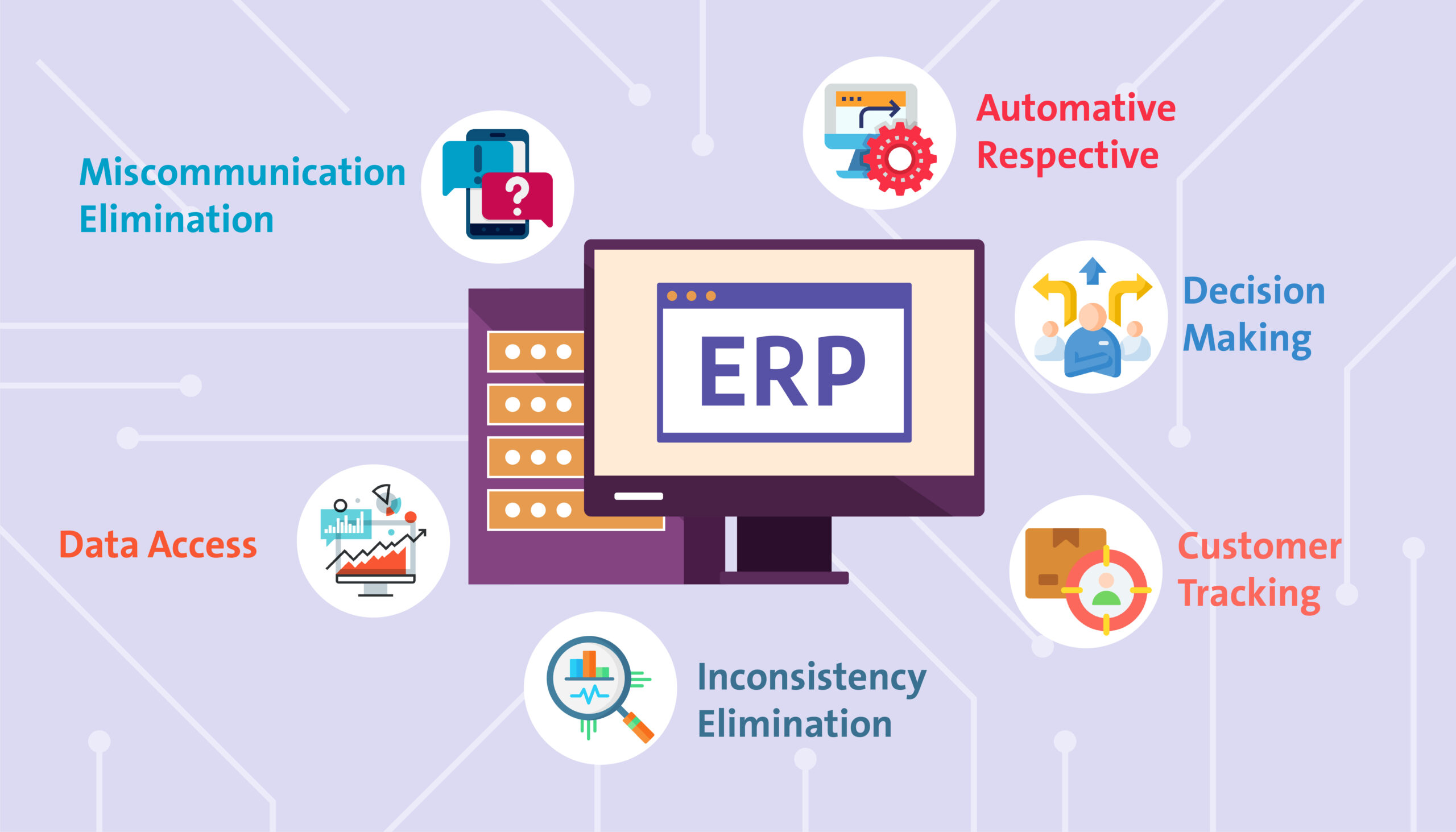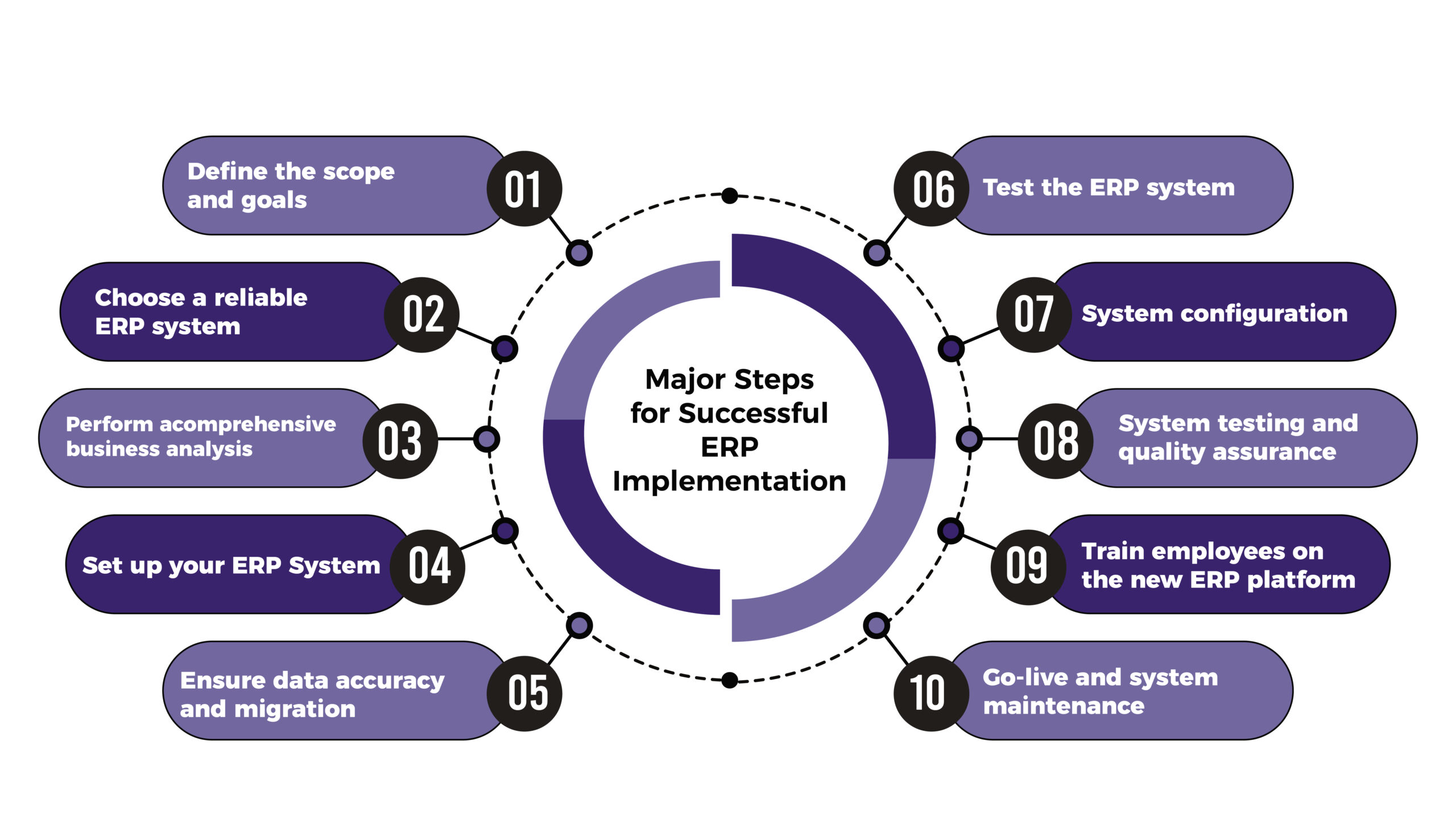10 months ago
Unlocking Organizational Success by Embracing the Strategic Roadmap to ERP Implementation

Did you know?
- The global ERP software market is expected to reach a staggering $78.40 bn by 2026, growing at a CAGR of 10.2%.
- The global ERP software market is estimated to take over 40% of the market share by 2025.
- According to Statista, around 49% of organizations implement ERP systems to improve business performance and efficiency.
The above stats showcase a dynamic and evolving ERP landscape. Cloud-based ERP solutions are gaining traction as the market grows due to their increased flexibility and scalability.
Implementing Enterprise Resource Planning (ERP) can be a game-changer for modern businesses. Though the implementation process is complex and affects many parts of the business, a well-designed implementation process is essential to driving success. Carefully dividing the implementation process with clear objectives can maximize business success.
Successful ERP implementation helps organizations to reduce costs, improve collaboration, boost productivity and efficiency thus leading to high-quality customer satisfaction and uplifting the organizations to thrive in the competitive business landscape.
What is ERP Implementation?
The process of installing and configuring ERP software within an organization is referred to as ERP implementation. This process combines various other business functions, such as human resources, finance, business operations, etc., under a single umbrella.
The major goal of ERP integration is to enhance the efficiency and effectiveness of an organization’s business operations as well as to gather real-time data and reporting possibilities. The ERP implementation process usually includes various phases such as analysis, design, implementation, testing, deployment, and maintenance.
How can an ERP help your organization?

Though the implementation process is complex and time-consuming, it is beneficial for organizations to experience increased productivity, cost savings, and improved data accuracy.
Major Steps for Successful ERP Implementation

1)Define the scope and goals
The major steps towards a successful ERP deployment are to define clear objectives and properly outline the scope of work. Describe the business areas such as financial management, customer relationship management, and supply chain operations. A proper understanding of the entire implementation process is a foundation for the ERP implementation journey.
2)Choose a reliable ERP system
The next step in an ERP integration project is to choose an appropriate ERP software solution, like FOX ERP. In this step, research and evaluate ERP software options to determine the one that best aligns with your organizational requirements and objectives.
While choosing an ERP platform, consider:
- Does the ERP software meet specific requirements such as finance, CRM, inventory management, etc.?
- Does the software integrate with your existing systems and data?
- Is the platform flexible and scalable enough to handle the future expansion of your business?
- Do the software providers offer adequate support and maintenance?
3)Perform a comprehensive business analysis
Conduct an extensive review of current business processes before implementing an ERP system. Determine bottlenecks and areas needing improvement so that the ERP system can be tailored to the organization’s needs. Additionally, the analysis enables the creation of new processes that address any issues found.
4)Set up your ERP System
Once the ERP platform is selected, you must configure the system to meet the organizational goals and unique requirements. This includes optimizing and personalizing the system to align with the unique business processes, requirements, and workflows. Along with customization, define user access control and integrate the ERP with other systems such as accounting, human resources, etc.
5)Ensure data accuracy and migration
Data accuracy is essential for a successful ERP integration. Examine the accuracy of the existing data to ensure its precision. Build a detailed data migration plan that outlines the procedures, resources, and techniques required to move data from the old ERP system to the new one.
6)Test the ERP system
Once the integration is completed, testing the ERP system for its functionality and data accuracy is essential. The test includes all system applications and processes, as well as verifying all the migrated data.
During this stage, it’s important to
- Test system security
- Conduct end-to-end system functionality
- Analyze compatibility with other systems
- Validate migrated data for accuracy
- Test automation processes
- Confirm compatibility with other systems and applications
7)System configuration
Involve IT consultants to fully leverage the features within the ERP system and configure the entire system. Configuration ensures that the software’s functionality can be customized to fit organizational requirements. Involving professionals in configuration ensures that risks are assessed, and data loss is prevented.
8)System testing and quality assurance
Perform thorough testing and quality assurance to spot and rectify any issues before the ERP implementation. To ensure the program runs smoothly, test a range of instances, including various steps and user data.
9)Train employees on the new ERP platform
Before you proceed to launch the program fully, ensure your employees get access to adequate training on how to use the ERP system. Employees should be given an overview of how the ERP system works and how it is connected to the business, as well as the features and functions of the ERP system and guidance on troubleshooting issues.
10)Go-live and system maintenance
The last step in implementing an ERP system is to go live and perform ongoing maintenance. It’s essential to regularly evaluate and upgrade the system to ensure its seamless performance. Ensure user feedback is collected to drive enhancements and continuously improve the system. IT teams should manage updates from the ERP vendors to take full advantage of the system features.
Implementing cBiZ | Digital Business for Transforming Businesses
With cBiZ, organizations can optimize their business operations and gain a competitive advantage. Though the implementation process is complex, carefully considering and following the steps mentioned above enables organizations to explore the benefits of the ERP platform. With the cBiZ Digital Business Platform, businesses can improve efficiency, streamline processes, and gain valuable business insights.